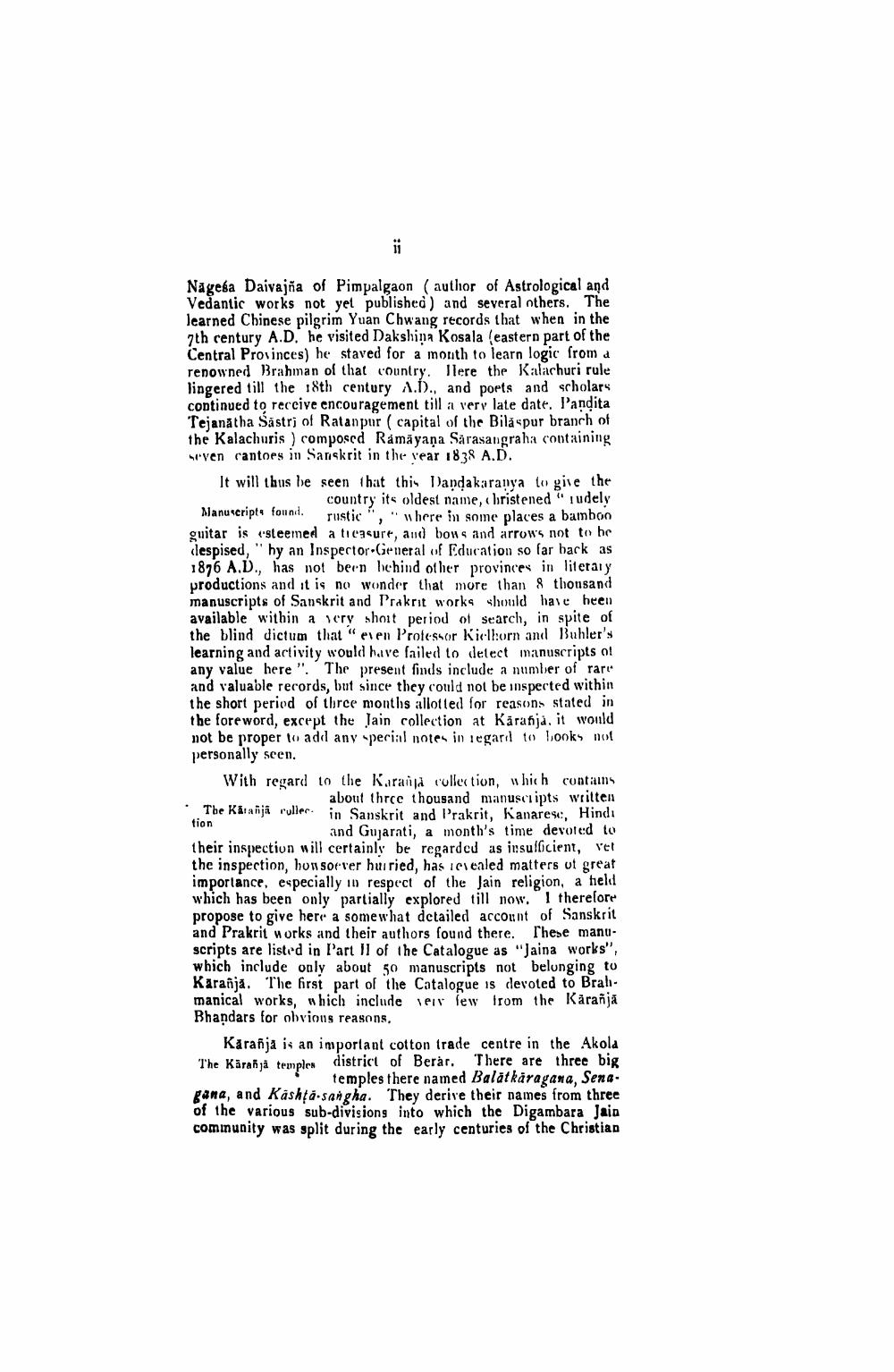________________
Nageba Daivajña of Pimpalgaon (author of Astrological and Vedantic works not yet published) and several others. The learned Chinese pilgrim Yuan Chwang records that when in the 7th century A.D. he visited Dakshina Kosala (eastern part of the Central Provinces) he staved for a month to learn logic from a renowned Brahman of that country. Jlere the Kalachuri rule lingered till the 18th century A.1)., and ports and scholars continued to receive encouragement till a very late date. Pandita Tejanatha Sastri of Ratanpur ( capital of the Bilaspur branch of the Kalachuris ) composed Ramayana Sarasangraha containing ven cantoes in Sanskrit in the vear 1838 A.D. It will thus be seen that this Dandakaranya to give the
country its oldest name, christened "rudely Manuscripts found. rustic", "where in some places a bamboo guitar is (steemed a treasure, and bons and arrows not to be despised, "hy an Inspector-General of Education so far back as 1876 A.D., has not been behind other provinces in literary productions and it is no wonder that more than 8 thousand manuscripts of Sanskrit and Prakrit works should have heen available within a very short period of Search, in spite of the blind dictum that "even Professor Kielhorn and Buhler's learning and activity would have failed to detect manuscripts ol any value here". The present finds include a number of rare and valuable records, but since they could not be inspected within the short period of three months allotted for reasons stated in the foreword, except the Jain collection at Kåranja, it would not be proper to add any special notes in regard to looks not personally seen. With regard to the Korand collection, which contains
about three thousand manuscripts written • The Käs aja culier. in Sanskrit and
anja ruller in Sanskrit and Prakrit, Kanarese, Hindi tion
and Gujarati, a month's time devoted to their inspection will certainly be regarded as insulGcient, Vet the inspection, hon sorver hu ried, has ici ealed matters ut great importance, especially in respect of the Jain religion, a field which has been only partially explored till now. I therefore propose to give here a somewhat detailed account of Sanskrit and Prakrit works and their authors found there. These manuscripts are listed in Part II of the Catalogue as "Jaina works", which include only about 50 manuscripts not belonging to Karanja. The first part of the Catalogue is devoted to Brahmanical works, which include er few from the Karanja Bhandars for obvious reasons.
Karasja is an important cotton trade centre in the Akola The Kärañji temples district of Berár. There are three big
temples there named Balatkaragana, Senagana, and Kashta-sangha. They derive their names from three of the various sub-divisiong into which the Digambara Jain community was split during the early centuries of the Christian




